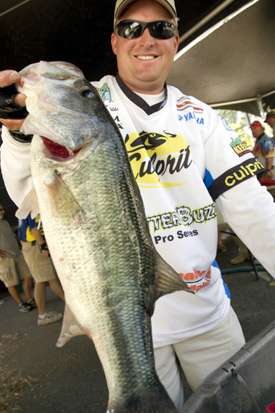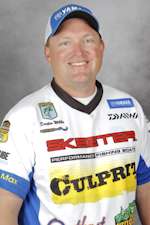
One thing a lot of anglers don't appreciate about winter bass fishing is how active the bass are at times. Too many guys think all the fish are sitting on the bottom of the lake, in the deepest water they can find, hoping against hope for an early spring. They aren't. Many of them are active, and they're active in shallow water.
The key to catching wintertime bass is weather stability. Anytime the weather is stable — ignore absolute values for air or water temperatures — bass will become active. They'll chase baitfish in water temperatures as low as the high 40s, sometimes colder than that.
Most of that chasing occurs in water less than 10 feet deep, more often than not less than five or six. These are active, feeding fish. They can be caught with the right lures and the right techniques. My choice is a lipless crankbait.
I know that challenges conventional wisdom. You'll hear and read countless stories about how you should drag a jig real slow at this time of year. Listen to or read enough of that stuff and you'll start to believe that's the only way to catch a December bass. It's not, or at least that hasn't been my experience. I do much better with a Daiwa TD Vibration or a Daiwa Game Vibe than I do with a jig.
With all that in mind, here's a sample of my holiday fishing plans:
I'll pay attention to the weather. When it's been stable for two or three days, I'll break out my tackle and head toward my favorite lake.
Once there I'll look for a shallow creek arm that's no deeper than 10 feet — 6 feet is even better. If I can find one that has a channel or cut running through it, I'll stop there first. But I won't pass over a good looking spot just because it lacks a channel.
I'll cast my bait out, let it fall to the bottom and work it back toward the boat with a yo-yo type of retrieve. I'll fish it relatively slowly. What I won't do, however, is work it ultra-slow. My bass are chasing baitfish. If they want my bait, they'll catch it, cold water or not.
If I'm really lucky, I'll find some rocks in the area. When that happens, I'll toss my Vibration or Game Vibe into them and bring it back with an up and down retrieve, making sure I hit every rock I possibly can. My bait will hang from time to time, but most of them will come out if I put slack in the line. Hooks don't penetrate rock.
My strikes will occasionally be the "tick" that you hear so much about. But just as often they'll be a bone jarring snap that'll pull the rod out of your hand if you aren't paying attention.
Generic is the word that best describes my color selection. I prefer natural shad hues — green shad is a favorite — and reds if the water's stained. I know red is traditionally associated with crawfish, and the crawfish aren't active at this time of year. Logic says it shouldn't be a good wintertime color, but I know differently even though I don't know why.
In fact, I don't know why any of this works. It may be because the creepy, crawly things on the bottom are gone or it may be because baitfish are the forage of choice for bass or it may be because bass prefer shallow water. More likely it's because of something neither bass nor man understand.
Regardless, it works. Bass are active and shallow in the winter. They aren't bears. They don't hibernate!





